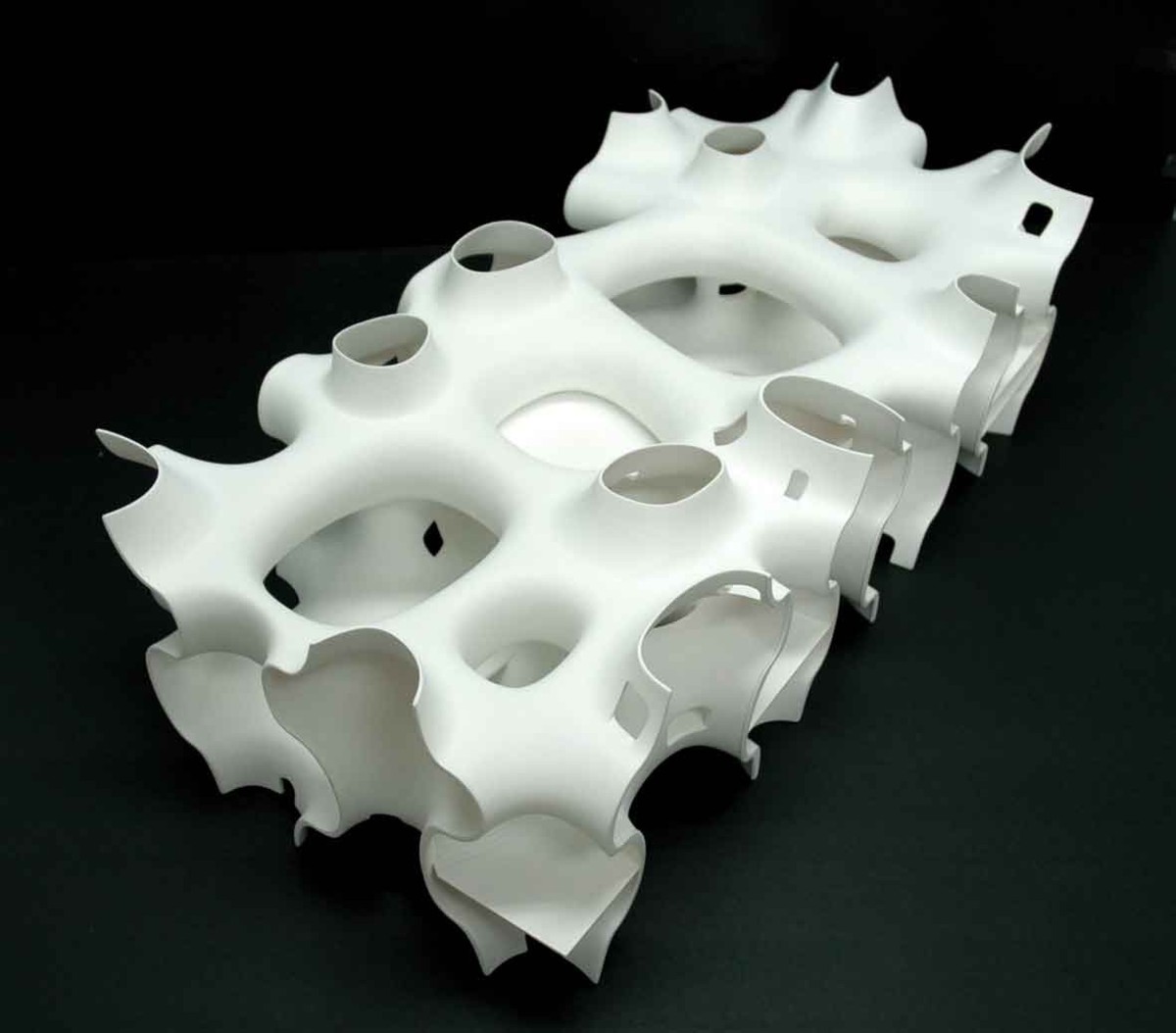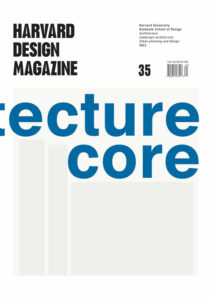Matters of Discipline
Several recent issues of Harvard Design Magazine have been devoted to ideas at the intersection of various design fields, addressing topics such as “Practice” or “Sustainability and Pleasure.” The aim of these publications was to encourage broader debate within the design community and to build bridges across disciplines.
By contrast, this and the next two issues of HDM will focus more specifically on disciplinary themes. It is of course the knowledge of specific single disciplines that defines and fuels transdisciplinary practices. We cannot speak of cross-fertilization between architecture and landscape architecture, for example, unless we understand and possess the know-how, creativity, and conventions distinct to each of these disciplines. But what does it mean to speak of a particular design discipline today? How might we speak of architecture’s disciplinary conditions and values? The very term “discipline,” with its explicit overtones of authority and order, is antithetical to contemporary values of openness and diversity. So how might we negotiate the relation between architectural norms and social norms, the first seeking focus, the second seeking inclusion?
In a field of study like architecture disciplinary questions clearly lie at the core of pedagogical and methodological concerns—what to learn and how to learn it. But is this knowledge immutable? What is, or what should be, the impact of societal and technological transformations on disciplinary values?
These and other questions are of particular relevance to the academy, the place where pragmatic realities and needs are considered in light of specific forms of knowledge that respond to broader cultural conditions.The academy reacts to external conditions by creatingthe knowledge and imagination that help reshape that reality. However, within both the academy and a discipline, levels of disciplinary autonomy have to be negotiated. Some would argue that the autonomy must be absolute architecture is architecture and should not be diluted by “extraneous” concerns. Equally, many argue that knowledge of the traditions and transformations of a discipline is also necessary for the evaluation and appreciation of designed artifacts. This is why it is imperative to pursue the specific characteristics central to design imagination, and why this issue of HDM—on Architecture’s Core?—has some urgency.
Exploration of disciplinary cores is the work of this and next two issues of the magazine, covering landscape architecture and urbanism respectively. In contrast to architecture and landscape architecture, however, urbanism is a synthetic field, subsuming not only the discipline of planning and the practice of urban design but also concepts of the relationship between them. These three issues will help, we believe, instigate new disciplinary methods and domains of investigation.
Architecture’s Core? seeks to unfold a range of practices significant in the creation of contemporary architecture. The inventiveness entailed is particularly important at a time when the vast majority of the buildings being constructed across the globe have little to contribute to the discipline. It is not that these buildings have no financial or protective worth, but rather that they do not deepen or broaden our understanding of architecture’s core values.
In many ways the current condition of architecture reflects the crisis of style and of values occurring since the 19th century, a crisis rooted in the Enlightenment. For a time modern architecture, with its apparently coherent cultural, political, and architectural agenda, seemed to provide a meaningful response to this crisis. But we find ourselves yet again in a situation in which cultural predilections render insignificant the distinctions between a “modernist” building (by, say, Richard Meier) and a “post-modernist” one (by, say, Robert Stern). Today the choice of such styles is considered merely a matter of subjective taste rather than of collective values. Perhaps this situation is partly due to an overemphasis on the superficial appearance of architecture and its historical precedents—meaning derived through associations rather than through more substantive matters revealed, for instance, by plan and section drawings.
This tension between history and the present is one of the key factors in our consideration of design’s core values. The Vitruvian virtues of firmitas, utilitas, venustas—solidity, utility, and beauty—were thought to be consistent with the idea of architecture’s imitation of nature. Are these virtues still primary today? Although the solidity of a stone Roman building is not a prerequisite for contemporary architecture, we still wish our structures to be useful and beautiful. But even utility and beauty are subject to diverse interpretations inflected by our understanding of architecture as a discipline.
One of the values of a discipline is to use its conventions to animate the imagination. The relationship of the architect to these conventions is not uncritical; he or she must, for example, explore ways in which certain kinds of drawings can best help imagine buildings. A quick handdrawn sketch produces different outcomes than a careful deployment of projective geometry. Such alternative strategies place greater focus on how we conduct our investigations. For Le Corbusier the plan was the generator, but various computer programs have in recent decades become significant catalysts for the three dimensional conceptualization and prioritization of architectural form. A critical engagement with the tools and methods of architectural drawing, both historical and current, is bound to reveal further insights into the imagining and making of contemporary architecture. We hope that this and the forthcoming issues of HDM will be the instigators of such insights.

